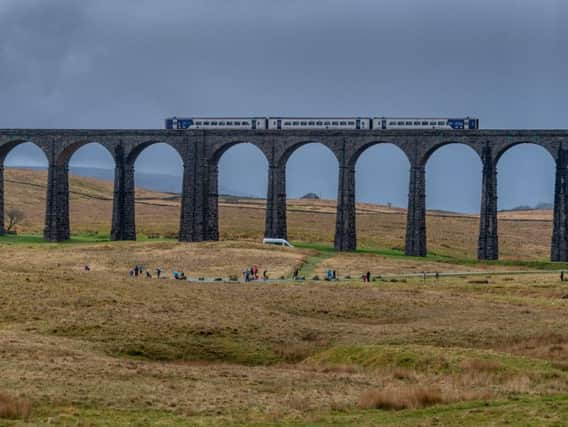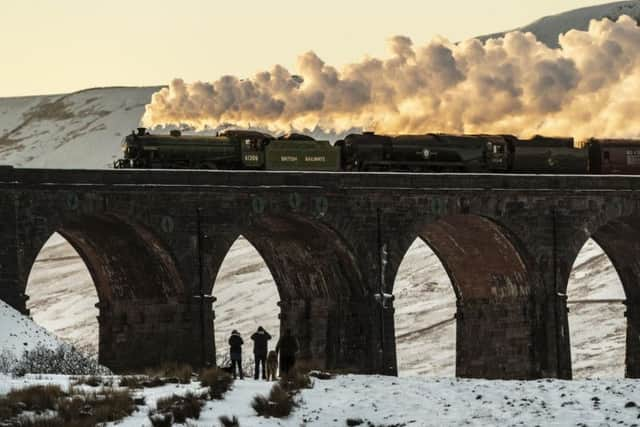The fascinating story of the abandoned towns that lie beneath Yorkshire's famous Ribblehead Viaduct


Carrying the Settle to Carlisle line through Ribblesdale, it's one of the most iconic railway structures in the world in one of the most scenic locations.
Video: Watch the moment Cumbrian Mountain Express crosses Ribblehead Viaduct in snowThe viaduct itself is a masterpiece of Victorian engineering - yet it was also built almost entirely by hand.
Advertisement
Hide AdAdvertisement
Hide AdUnderneath its arches, walkers can still see the remains of the settlements that once housed the hardy workers who built the line across some of the most inhospitable terrain in Britain.


Thirty years ago the Settle to Carlisle line was saved from closureThese shanty towns were given deliberately iconic names - Belgravia, where the supervisors lived, evoked the genteel London district and Sebastopol paid tribute to a notorious Crimean War siege.
More than 1,000 men arrived at the construction camps in 1870, tasked with building the viaduct and Blea Moor tunnel. The area was bleak and isolated, and the single-storey wooden huts provided to accommodate the navvies - slang for 'navigators' - offered little protection against harsh Pennine winters.
11 iconic trains to have run over Ribblehead Viaduct since it was saved from closureAttempts at recreating civilisation were made - Batty Wife Hole had shops, pubs, a school, post office, library and hospital.
Advertisement
Hide AdAdvertisement
Hide AdSebastopol was more of an engineering base, with a brickworks and engine house. In all, there were nine camps serving the Midland Railway's Settle to Carlisle line, and earthworks from three can still be seen today. Remnants of the Sebastopol brickworks, including rubble chimneys up to two metres high, are still visible, as well as remains of houses, shacks and a tramway.


Most of the workers were itinerants, who would move onto the next construction project without remaining in the area. Many of the camps would die when this exodus occurred.
In 2016, an ITV period drama based on life in Jericho, one of the camps on the route, was aired. The project arose out of the Midland Railway's wish to build their own line from London to Scotland via Carlisle - meaning they would no longer have to run on their rival the London and North Western Railway's tracks. Midland passengers heading to Carlisle previously had to disembark at Ingleton Viaduct and walk a mile to the next station to catch a LNWR service.
There was a twist in the tale, as after receiving government permission to build the new line from Settle, the LNWR relented and allowed the Midland access to their line into Carlisle. The Midland tried to pull out of their financial commitment, but it was too late - the government insisted that the building of the route go ahead.
Advertisement
Hide AdAdvertisement
Hide AdInstead, they commenced the recruitment of their navvies - construction would pre-date the introduction of mechanical diggers by only a few years, so it was the last major railway built by hand. The use of gunpowder to blast tunnels meant that 100 of the workers died during construction.
These railway camps soon developed a 'wild west' reputation for drunken violence and poor living conditions, though historians argued that ITV's depiction of Jericho as a dangerous place was inaccurate. Disease was, however, a big killer, and smallpox broke out in the Ribblehead communities.
Unmarked navvy graves are believed to be scattered across the moor, and the smallpox victims were buried in a nearby churchyard.
Was it worth it? The first train ran over Ribblehead Viaduct in 1874, and the line survived a closure battle in the 1980s. Since then, passenger numbers have increased, and the viaduct, now Grade I-listed, still stands brooding over the Batty Moss bog, testament to a great feat of both engineering and fortitude in a hostile environment.